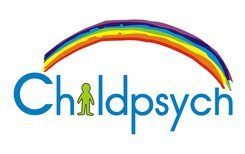As parents, we’re often confronted with the challenges of understanding and addressing our children’s sleep disturbances. Two common phenomena that can disrupt their rest are nightmares and night terrors. While they might seem similar at first glance, they are distinct experiences with different causes and implications. Let’s delve into the disparities between nightmares and night terrors to equip you with the knowledge needed to support your child’s peaceful slumber.
What are Nightmares?
Nightmares are vivid and disturbing dreams that occur during REM (rapid eye movement) sleep, typically in the latter part of the night. They often involve scenarios that evoke fear, anxiety, or sadness, leaving the child feeling unsettled upon waking. These dreams are usually recalled upon waking, allowing the child to recount the experience in detail.
Causes of Nightmares: Nightmares can stem from various factors, including:
- Stress or Anxiety: Overwhelming emotions from school, family dynamics, or other sources.
- Traumatic Events: Exposure to frightening experiences or media.
- Medications or Illness: Certain medications or fever can contribute to nightmare occurrence.
Symptoms of Nightmares:
- Intense fear or distress during sleep
- Waking up suddenly, often crying or seeking comfort
- Remembering the dream upon waking
- Difficulty falling back asleep
Understanding Night Terrors
Night terrors, on the other hand, are episodes of intense fear or agitation that occur during non-REM (NREM) sleep, typically within the first few hours of falling asleep. Unlike nightmares, children experiencing night terrors may appear confused, disoriented, or inconsolable, often thrashing or screaming. Interestingly, they usually have no recollection of the event upon waking.
Causes of Night Terrors: Night terrors may be attributed to:
- Genetics: A family history of sleep disorders or parasomnias.
- Stress or Fatigue: Overstimulation or inadequate rest.
- Sleep Disruptions: Irregular sleep schedules or sleep disorders like sleep apnea.
Symptoms of Night Terrors:
- Sudden onset of intense fear or panic
- Sitting upright in bed, screaming, or thrashing
- Lack of responsiveness to comfort
- Limited to no recollection of the episode upon waking
Coping Strategies for Parents
1. Maintain a Consistent Bedtime Routine: Establishing a calming pre-sleep ritual can help alleviate anxiety and promote better sleep hygiene.
2. Create a Safe Sleep Environment: Ensure the bedroom is conducive to sleep, free from stimulating distractions and sources of fear.
3. Offer Reassurance: Comfort your child after a nightmare or night terror, offering soothing words and physical touch to ease their distress.
4. Consult a Healthcare Professional: If sleep disturbances persist or significantly impact your child’s well-being, seek guidance from a pediatrician or sleep specialist for further evaluation and intervention.
In navigating the realm of childhood sleep disturbances, distinguishing between nightmares and night terrors is crucial for effective support and intervention. By understanding the causes, symptoms, and appropriate coping strategies, parents can help their children overcome these nighttime challenges and enjoy restful sleep once more.
Watch this informative video for additional insights:
If you found this article helpful, share it with other parents who may benefit from understanding the differences between nightmares and night terrors. Remember, you’re not alone in navigating these challenges, and seeking support from healthcare professionals can make a significant difference in your child’s sleep quality and overall well-being.

